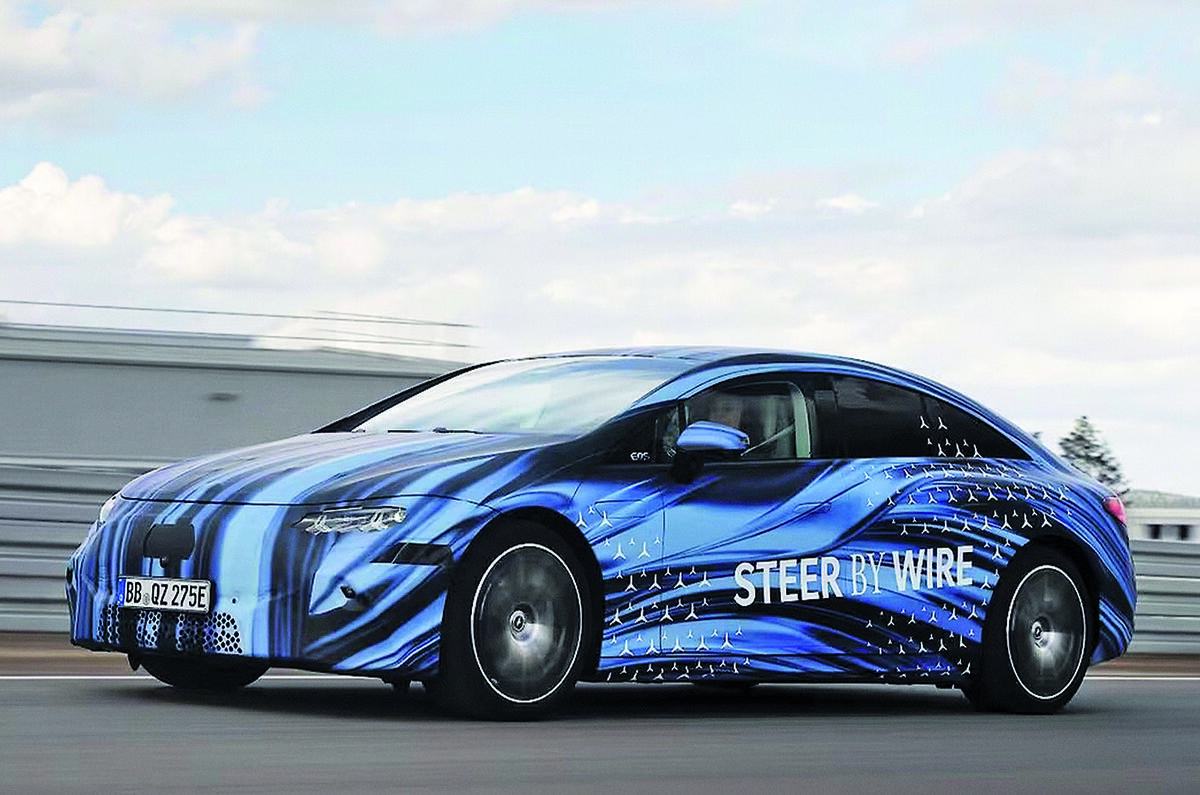Steer by wire is coming of age quickly and on its way to the showrooms of various brands.
Mercedes will be the first German manufacturer to introduce the technology with a ZF-developed system that does away with mechanical connections between the driver and road wheels, relying instead on sensors and electric actuators.
Nio is also fitting the ET9 with a ZF system, Lexus is launching steer-by-wire with the RZ next year and Bosch has three Chinese customers for its steerby-wire through its joint venture, Bosch Huaya Steering Systems, with production starting soon.
Steer-by wire was once an automotive forbidden fruit: legislation dictated that the connection between driver and wheels was mechanical.
UNECE Regulation 79 changed that in 2003, making steer-by-wire legal in Europe. Safety is taken care of in Mercedes’ system mainly by duplicated controls, so if one electronic link between driver and steering fails, the other will remain in place.
Redundancy applies to every step, including dual electronic signal paths, duplicated power supplies and hardware actuators.
Even if the whole lot fails, there are other ways of maintaining control. In the unlikely event of complete failure, some automated steering is still possible using rear-axle steering and by braking individual wheels using ESP.
The Mercedes’ steering feedback unit (SFU) sends an electronic signal representing the driver’s inputs to the steering rack unit (SRU), which does the steering.
There’s no mechanical connection, so there’s no steering torque, or feel. To create some, the tyre-to-road contact is calculated and fed back through the system. Steer-by-wire systems are not simple bolt-on pieces of kit, and each manufacturer will do a considerable amount of work calibrating it on a model-by-model basis.
Mercedes has already done more than 621,000 miles (one million kilometres) bench testing and the same again on proving grounds and in real-world traffic.
Nio says there are packaging and design benefits with freedom to set the steering wheel angle and the amount of feedback, and control is more precise.
A rectangular steering wheel is possible, for a better view of the instruments, and full lock can be achieved with only a 240deg movement of the wheel.
The ET9 system fi lters more than 80% of road vibrations back through the wheel from the road, and the steering column can telescope in and out by 153mm. Nio also says it opens up opportunities for a Game Mode – which is important in the Chinese market, particularly.
It also enables other technologies in the future, such as steering using a joystick rather than a wheel.




Join the debate
Add your comment
hmm, I'm not entirely convinced by these systems. I understand there's a lot of redundacy, I'm less informed about how the car could use the ESP system to steer the car when it may have lost all it's sensors in the very unlikely event of everything failing at once. Passenger jets have multiple redundacy systems, they still fall out of the sky every now and then....
Passenger jets cannot brake and stop midair, cars could brake midroad even in the midages. Computers plus redundancy are safer than human beings, and eventually all cars will be autonomous. Manual driving will be optional in some cars, for redundancy of nostalgia.
Every now and then as opposed to many times a day for car crashes. Airplanes are safer than cars no matter what statistics you use.
Quick Google search: in the UK 5 people die each day in a car crash with further 80 being seriously injured. Guess how many are killed or injured in a airplane.
Comparrasion to air travel is stupid, just how many times a day do you board an aircraft compared to get in your car. Probably find bus travel is as safe as flying, besides that how much is a jet aircraft.
A step too far?, what are the inherent benefits of drive by wire?,will it completely artificial ie, no feel other than what a load of sensors dictate what it thinks you'll accept?
One advantage is making it a lot more simpler to design left and right drive cars, no steering column, box, rack etc
It can make cars safer by not allowing the driver to make big, sharp steer movements that will certainly crash the car. Just one of the many examples.This technology is used with huge success in modern airplanes for this particular reason. The difference is that all pilots are interested in safety as opposed to drivers who think of themselves as racing pilots who want to have control because they can do it better than computers.